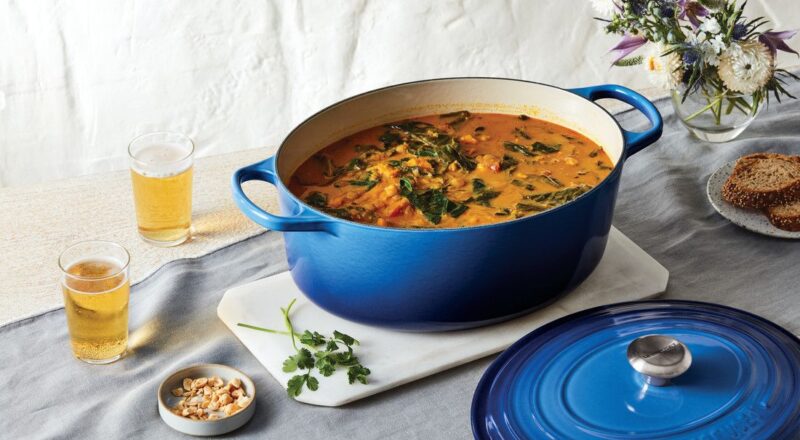Cast iron cookware has long been a favorite among chefs and home cooks alike, celebrated for its durability and ability to impart rich flavors to dishes. However, improper seasoning can lead to a host of problems, diminishing the performance and lifespan of your cherished cookware. In this article, we will explore the most common cast iron braiser seasoning mistakes and provide tips on how to avoid them, ensuring that your braiser remains a reliable kitchen companion.

Understanding the Importance of Seasoning
Seasoning is a critical process that involves applying a layer of oil to the surface of your cast iron braiser and heating it until the oil polymerizes, forming a protective coating. This coating not only prevents rust but also creates a non-stick surface that enhances cooking performance.
Common Mistakes in Seasoning
Using the Wrong Oils
One of the most frequent seasoning mistakes is using unsuitable oils. Oils with low smoke points, like butter or olive oil, can smoke excessively and leave a sticky residue. Instead, opt for oils with high smoke points such as flaxseed or canola oil.
Not Cleaning Properly Before Seasoning
Failing to clean your braiser thoroughly before seasoning can trap dirt and food particles under the seasoning layer. Always clean your braiser with warm water and a brush, avoiding soap that can strip the existing seasoning.
Applying Too Much Oil
Another common error is using too much oil during the seasoning process. A thick layer of oil can result in a sticky surface rather than a smooth, non-stick finish. Use a thin, even layer for the best results.
Skipping the Heating Process
Seasoning requires the oil to be heated so that it polymerizes and bonds to the iron. Skipping this step can lead to inadequate seasoning and a lack of protection against rust.
Inconsistent Heating
Ensure that your braiser is heated evenly during the seasoning process. Inconsistent heating can result in uneven seasoning, with some areas remaining unprotected.
Best Practices for Seasoning Your Cast Iron Braiser
Choose the Right Oil
As mentioned earlier, selecting the right oil is crucial. High smoke point oils like flaxseed, canola, or grapeseed oil are ideal for achieving a durable, non-stick surface.
Proper Cleaning and Drying
Before seasoning, thoroughly clean and dry your braiser. Ensure that no moisture remains, as this can lead to rusting during the seasoning process.
Apply Oil Sparingly
Use a paper towel to apply a thin, even layer of oil to the braiser’s surface. Wipe off any excess oil to prevent a sticky buildup.
Heat Evenly
Place your braiser upside down in the oven and heat it at a suitable temperature, usually around 350-400F (175-200C), for about an hour. This ensures that the oil polymerizes and forms a robust, even coating.
Repeat the Process
For optimal results, repeat the seasoning process a few times, especially if your braiser is new or has lost its seasoning. This will build a strong, protective layer that enhances performance.
Maintenance Tips for Your Cast Iron Braiser
Avoid Soap
Refrain from using soap when cleaning your braiser, as it can strip away the seasoning. Instead, use warm water and a brush to remove any residue.
Dry Immediately After Cleaning
After washing, dry your braiser immediately with a towel to prevent rust. You can also place it on a stovetop burner for a few minutes to ensure all moisture evaporates.
Re-season Regularly
Regularly inspect your braiser for signs of wear in the seasoning. If needed, perform a quick re-seasoning to maintain its non-stick qualities and protection against rust.
Benefits of a Well-Seasoned Cast Iron Braiser
A well-seasoned braiser offers numerous advantages, including enhanced flavor development in dishes, improved heat distribution, and increased durability. By avoiding common seasoning mistakes and following best practices, you can enjoy these benefits and extend the life of your cast iron braiser.
Conclusion
Properly seasoning your cast iron braiser is essential for maximizing its performance and longevity. By understanding common cast iron braiser seasoning mistakes and implementing the tips provided, you can ensure that your braiser remains a versatile and reliable tool in your kitchen.

FAQs
Why is seasoning important for cast iron?
Seasoning creates a non-stick surface and protects against rust, enhancing the performance and lifespan of your cookware.
Can I use olive oil for seasoning?
While olive oil can be used, it’s not ideal due to its low smoke point. High smoke point oils like flaxseed or canola are recommended.
How often should I re-season my braiser?
This depends on usage, but generally, it’s a good idea to re-season whenever you notice the non-stick surface diminishing or after deep cleaning.
For more insights on cooking with cast iron, check out this [guide on cast iron braisers](https://www.debuyer-usa.com/blogs/guides/cooking-with-a-braiser-vs-skillet-knowing-the-difference) here. You can also explore more about grilling indoors with a cast iron braiser.
This article contains affiliate links. We may earn a commission at no extra cost to you.

